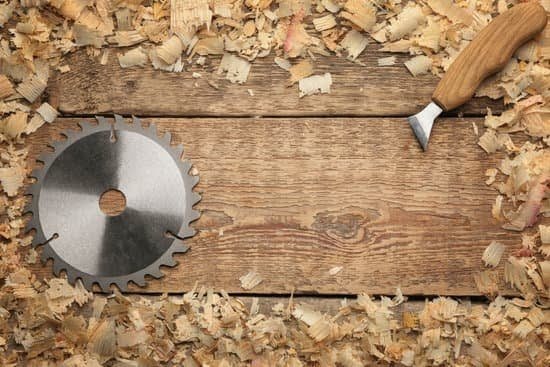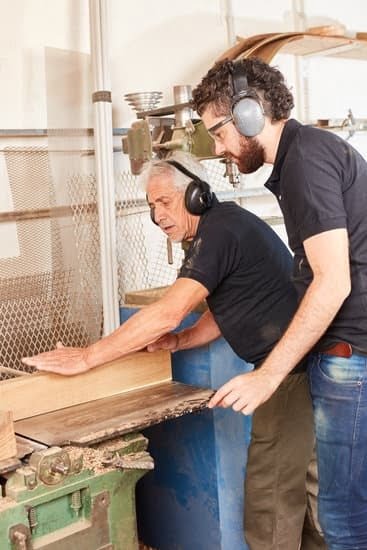Dremel makes a wide variety of woodworking bits, most of which are designed to cut or shape wood. The bits are available in a variety of sizes, shapes, and materials.
The number of different woodworking bits available from Dremel can be a little overwhelming, so we’ve put together this guide to help you choose the right bit for the job.
First, you need to decide what type of cut you need to make. Dremel offers two main types of woodworking bits: cutting bits and shaping bits.
Cutting bits are used for making straight or curved cuts in wood. They come in a variety of different shapes, including straight, V-shaped, and U-shaped.
Shaping bits are used for shaping and sculpting wood. They come in a variety of different shapes, including round, cone-shaped, and flower-shaped.
Next, you need to decide what size bit you need. Dremel offers woodworking bits in a variety of sizes, from 1/16” to 1-1/4”.
Finally, you need to decide what material the bit is made of. Dremel offers woodworking bits made of two different materials: high-speed steel (HSS) and carbide.
HSS bits are made of high-quality steel and are ideal for general-purpose woodworking. They can be used for both softwoods and hardwoods, and they hold their edge well.
Carbide bits are made of durable carbide and are ideal for cutting hardwoods. They can be used for both straight cuts and curved cuts, and they hold their edge well.
Mobile Woodworking Workbench
A mobile woodworking workbench is a great addition to any workshop. It allows you to move your workbench around the workshop as needed, and it also makes it easy to take your workbench with you to other locations, such as your garage or basement.
There are many different mobile woodworking workbench designs available, and you can choose the design that best fits your needs. Some workbenches have a simple design that consists of a few shelves and a work surface, while others are more complex and include features such as drawers, shelves, and peg boards.
When choosing a mobile woodworking workbench, you should consider the size of your workshop, the type of projects you typically work on, and the tools and materials you typically use. You should also consider the weight of the workbench and the type of wheels or casters that are included.
If you have a small workshop, you may want to choose a workbench with a smaller footprint. If you typically work on large projects, you may want a workbench with a larger work surface. And if you need to move your workbench around frequently, you should choose a workbench with casters or wheels.
No matter what design you choose, a mobile woodworking workbench is a great addition to any workshop. It allows you to move your workbench around the workshop as needed, and it also makes it easy to take your workbench with you to other locations, such as your garage or basement.
What Is Kumiko Woodworking
?
Kumiko woodworking is a traditional Japanese carpentry technique that uses thin strips of wood to create intricate geometric designs. The name “kumiko” comes from the Japanese word for “bamboo,” because the strips of wood are often made from bamboo.
Kumiko woodworking is a very complex and time-consuming process that requires a lot of skill and patience. The designs are typically very intricate, and can take weeks or even months to complete.
The finished products are very beautiful and are often used to decorate temples, shrines, and other important buildings. Kumiko woodworking is a dying art, and there are only a few craftsmen who still know how to do it.
How To Ground Woodworking Machines
In order to ground woodworking machines, you need to create a path for the electricity to flow from the machine to the ground. This can be done by either using a grounding cord or a grounding strap.
The grounding cord should be plugged into the machine and then plugged into an outlet that is grounded. The grounding strap should be wrapped around the machine and then plugged into an outlet that is grounded.
If you are using a portable machine, you can ground it by using a metal stake and attaching the grounding cord to the stake. The stake should be hammered into the ground near the machine.
Woodworking Tables
Woodworking tables are an important part of any woodworking shop. They provide a stable surface for woodworking projects, and they also provide storage for tools and supplies.
There are many different types of woodworking tables available, and each has its own advantages and disadvantages. The most important thing is to choose a table that is the right size and shape for your needs.
There are several factors to consider when choosing a woodworking table. The first is the size of the table. The table should be large enough to accommodate the project you are working on, but it should also be small enough to fit in your workshop.
The next factor to consider is the type of table. There are three main types of woodworking tables: stationary tables, folding tables, and portable tables.
Stationary tables are the most stable, but they are also the most expensive and take up the most space. Folding tables are less expensive and take up less space, but they are not as stable as stationary tables. Portable tables are the most affordable and the most portable, but they are the least stable.
The next factor to consider is the type of woodworking project you are working on. Some projects require a larger or a smaller table than others.
The final factor to consider is your budget. Woodworking tables can range in price from a few hundred dollars to a few thousand dollars.
Once you have considered these factors, you can choose the right woodworking table for your needs.

Hi everyone! I’m a woodworker and blogger, and this is my woodworking blog. In my blog, I share tips and tricks for woodworkers of all skill levels, as well as project ideas that you can try yourself.





